Tibet
19th century
Also known as vajra position, this posture is associated with meditation.
Tibet
19th century
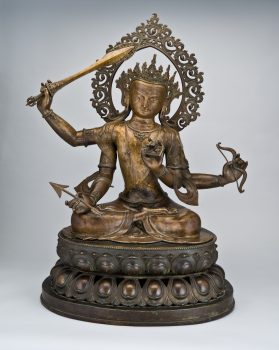
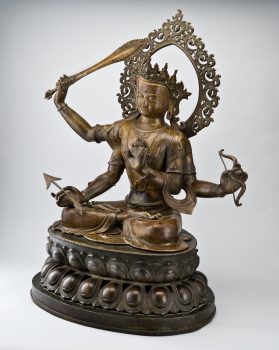
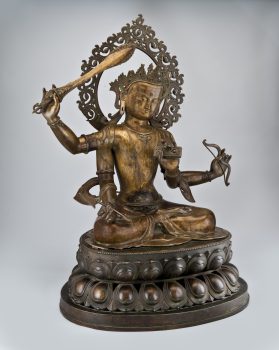
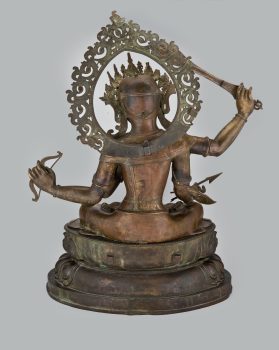
A tantric bodhisattva and a deity associated with wisdom, this form of Manjushri is the focus of practice in all of the Tibetan Buddhist traditions. He is also one of the most represented in the art of Tibet and related cultural regions. Here he is seated on a lotus pedestal and has four arms. His upper left hand raises a sword, cutting through ignorance. In his opposite hand is a book, symbolizing wisdom and Buddhist teachings. His lower-left hand holds an arrow and its opposite hand holds a bow of penetrating wisdom.The slim proportions of the body, a slight bend, well-articulated arms, torso, and the slightly large and inclined head convey the impressions of youthfulness. A scrolling motif of the halo, open work lotus pedestal, and the articulate rendering of the face suggest strong familiarity with Nepalese aesthetic conventions. Note also the incised decoration on the lower garment (dhoti), soles of his feet, and nice molded details on the book and the sword. It is possible that the sculpture was produced for a Tibetan patron in a Nepalese workshop.
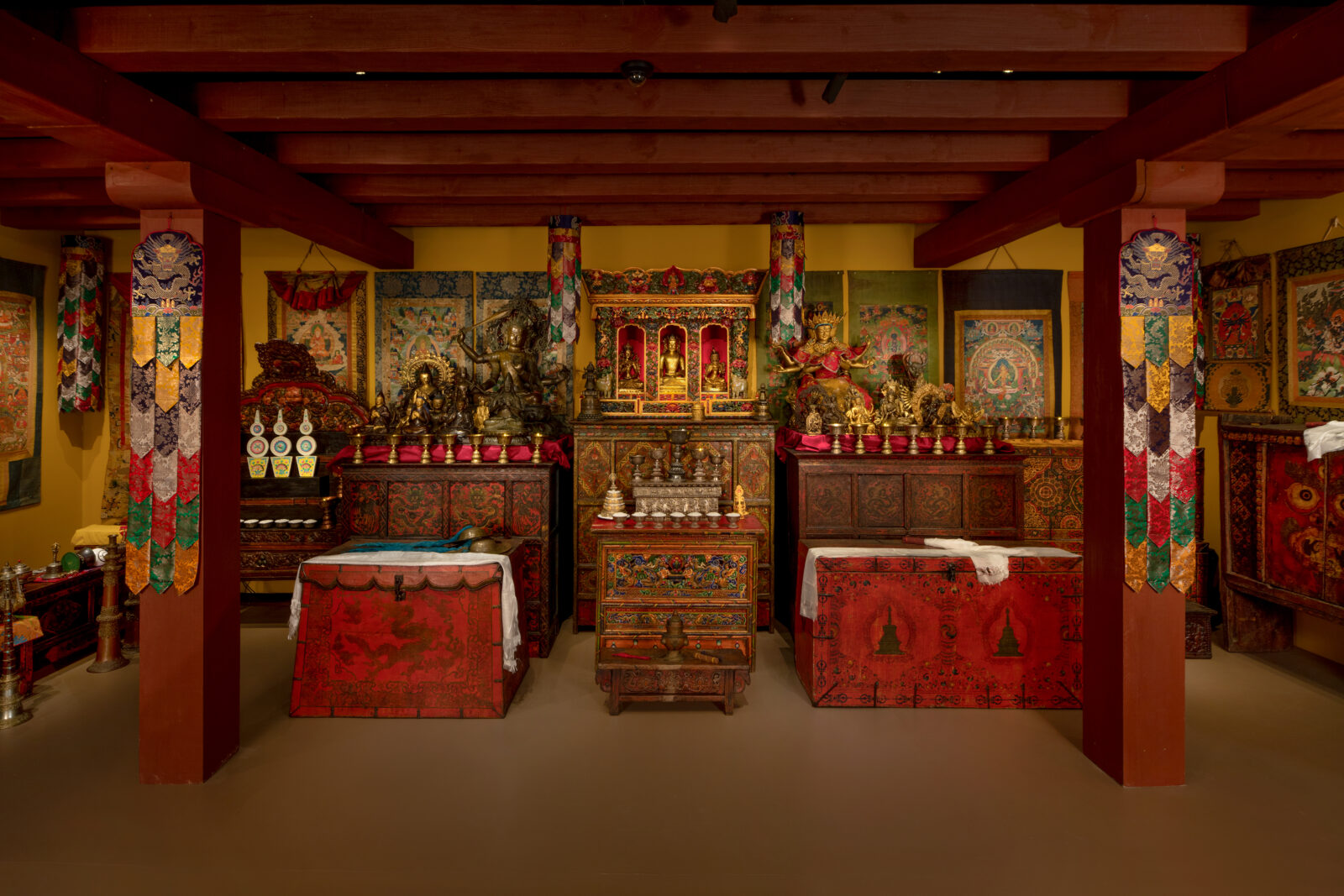
Photo by Dave de Armas
A religious movement that originated in India around the fifth to seventh century with sacred writings and esoteric teachings and practices transmitted from teacher to student through initiation. These remain an important part of Hinduism and Buddhism today.
A contemplative practice in which a person uses concentration and visualization to achieve aims such as transforming the mind and generating feelings of compassion. Techniques include focusing on breathing or visualizing oneself as a deity.
The antidote to ignorance, with the highest form of wisdom being an understanding of the true nature of reality and all phenomena. In Buddhism studying the nature of interdependence and emptiness is considered an important step for attaining wisdom.
Beings who aspire to become fully awakened like the Buddha and are dedicated to helping others on the path to enlightenment.
Today, Tibetans primarily inhabit the Tibetan Plateau, situated between the Himalayan mountain range and the Indian subcontinent to the west, Chinese cultural regions to the east, and Mongolian cultural regions to the northeast. During the 7th to 9th century, Tibetan rulers expanded their empire across Central Asia, and established Buddhism as the state religion.
Get the latest news and stories from the Rubin, plus occasional information on how to support our work.